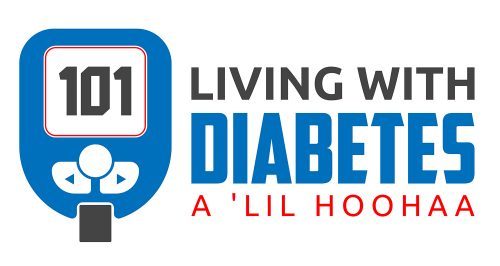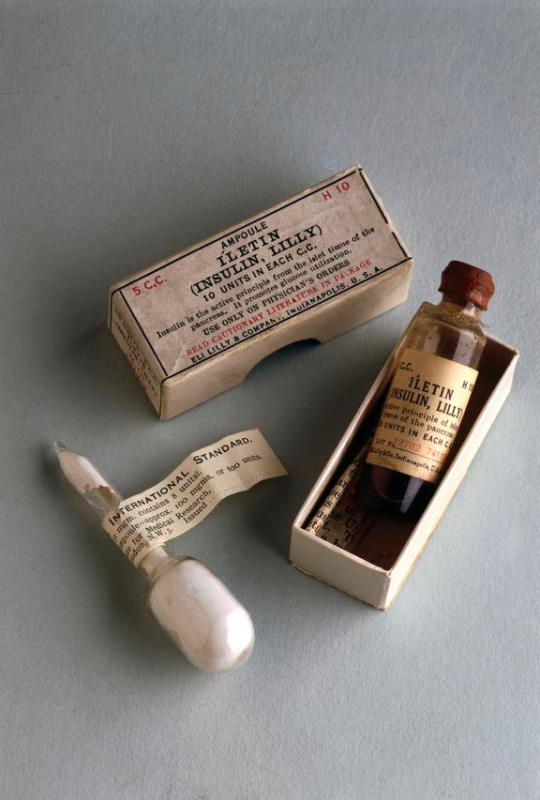#diabetes life
Text
Living with Diabetes: February 2024 check in
I haven’t written one of these posts in a while. Probably because I honestly haven’t done too well with things. My numbers are way higher than they should be and I’m doing, well, pretty shitty in holding myself accountable.
But I have to look at the overall picture. Sometimes that can be really hard to do.
For those of you who have followed my blog, you’ve probably seen these posts before.…

View On WordPress
0 notes
Link
Mr. Divabetic talks with international yoga teacher, and author Rachel Zinman, living with LADA diabetes, who shares a guided meditation, "Compassion Meditation," focusing on self-love and compassion to help jumpstart your year with a new attitude. There have been many bumps in the road on Rachel's journey with LADA diabetes (latent autoimmune diabetes in adults) related to her initial misdiagnosis.
She shares how yoga and meditation helped her to overcome years of frustration and confusion about managing her diabetes. Rachel's meditation references Tara, a female deity in both Hinduism and Buddhism.
#divabetic#Diabetes#diabetes life#yoga#yoga teacher#diabetic#lada diabetes#lada#guided meditation#meditation#meditative#Mindfulness#mindset#healthy living#overcoming#mistakes#misdiagnosis
0 notes
Text
Being disabled means experiencing something terrifying health wise, but being uncertain if it’s hospital worthy
#dores world 🌍#disability#disabled#chronic illness#chronic pain#chronic fatigue#disabled life#actually disabled#chronic disability#my sugars went to 3.8 for the first time ever and I don’t know what to do#I mean had some carbs and sugar so I’m just waiting to see what that does and I guess I’ll go from there#diabetes#diabetic
789 notes
·
View notes
Text
boy chronic illness really is just a series of small moments where you throw up your hands and internally scream, "THAT'S IT!! I'VE HAD IT!! THIS IS THE END!!" and then sigh and continue on as normal
#not trek#my life#chronic illness#type 1 diabetes#t1 diabetes#ignore me i'm being dramatic#venting#i'm fine#i will regret this post
255 notes
·
View notes
Text
okies!
so we spoke about her love language earlier in the week! something very particular about August, she does have one little thing she does to show her affection to those around her
booping you
cheek, chin, ribs, arm, forehead, anywhere she can reach to basically poke you, thats he oddly showing her affection!
Baxter is the only one she bops on the nose! to her, its such a twee and precious nose and she simply cannot help herself!!
(feat commissions from @minthe-drawings of August penchant to 'boop!' Baxter in step 3 and 4!)

Step 3 Babies!! (Baxter is so endeared by it because he has never experience this before!!)

Step 4 Darlings!! (August likes to be cheeky, and has conditioned Baxter to expect a kiss when she boops him, and here he is gonna get what he is promised!)
URGH seeing them side by side is the cutest thing ever and seeing how they change but their love is precious and sweet and and
i love them so much your honour!
#my darling august!#baxter so use to getting a boop and a kiss that when he doesnt#he actually pouts#too sweet they give me diabetes#boop!#baxter ward#olba#our life beginnings and always#our life#olba baxter#olba mc#our life baxter#our life: beginnings & always#baxter x mc#our life beginnings & always#meow drabbles!#meow infodump!
83 notes
·
View notes
Text
Me: Doctor, I need help. I've got a severe anemia and I have tried all iron supplements available in this country in the past 3 years but I can't digest any of them. Not even the mild 18mg iron ones. They give me a food poisoning. What should I do?
Doctor: I see. Let's take a blood test to see your iron levels.
Me: Thank you.
Doctor, 2 weeks later: Your blood tests are here. You have a severe anemia. Your iron level is 9.
Me: Yes, I know.
Doctor: You are to take 100mg iron every day for 6 months.
Me: What?
Doctor: Or if you get an upset stomach, then every other day.
Me: What part of "I have a severe anemia and I can't digest any iron supplements" did you miss?
#LE SIGH#also my blood sugar levels were a bit high and now I'm waiting to hear if I have a fucking diabetes on top of this too#niu's life
76 notes
·
View notes
Text
guys guys guys
Pandora being diabetic and her parents not knowing about insulin pumps made by muggles so Reg helps her with the insulin shots
#dead gay wizards#marauders#marauders era#the marauders#regulus black#pandora rosier#pandora lovegood#diabetic#slytherin skittles#their so cute#besties for life
84 notes
·
View notes
Note
Do you know how our understanding and treatment of diabetes has changed through history?
Oooh good question, anon!
As you may guess, diabetes mellitus is not new.

We've known about it since at least the Ebers Papyrus (1550 BCE) when the disease and a treatment was first described. This treatment was: "a liquid extract of bones, grain, grit, wheat, green lead and earth." I did not look these up, but I would guess they did not do a whole lot for the treatment of diabetes.
Later during the 6th century BCE it was first given a name when it was described by Hindu physician Sushruta as madhumeh or "honey urine."
Honey urine is a very apt descriptor for diabetes. In any type, one of the most measurable symptoms is that the person urinates a lot, and the urine tastes sweet (or, if one didn't feel like tasting, that it ferments, or that it attracts ants). This was also the first test for diabetes.
The reason for the sweetness of the urine (as well as a lot of other general info about diabetes) is spelled out more clearly in my "Don't Be That Guy Who Wrote Hansel and Gretel: Witch Hunters" post.
A Greek physician Apolonius of Memphis named it Diabetes, meaning "to siphon" (referring to the large amount of urine lost).
Roman physician Aretaeus later made the first precise description of diabetes. This included the classic symptoms of incessant thirst, copious urination, and constant hunger leading to emaciation and death. He also notes that if deprived of water, the patient will continue to urinate until they become so dehydrated that they die.
The term "Mellitus" was not added until the 1600s by an English physician Thomas Willis. This was again due to the sweetness of the expressed urine. Willis prescribed a diet of "slimy vegetables, rice, and white starch. He also suggested a milk drink which was distilled with cypress tops and egg whites, two powders (a mixture of gum arabic and gum dragant), rhubarb and cinnamon". Supposedly his patients improved if they kept to this diet, though few managed it long term. I honestly don't know how it would have worked, even temporarily.
A major breakthrough came in 1889 when it was discovered that if you removed the pancreas from a dog, the dog would become diabetic (particularly, that it would urinate large quantities of sweet urine). Up until this point it was thought that diabetes stemmed from the kidneys and bladder, or perhaps the lungs. This was the first time it had been shown experimentally that the pancreas was the problem.
Speaking of this, this was also part of a series of experiments where an English physician named Merkowski implanted a small amount of pancreas in the pancreas-less dog's fat, which reversed the diabetes temporarily. This proved that the pancreas was making something that helped regulate blood (and thus urine) sugar.
What this was wasn't figured out until 1921, when Canadian scientists Banting and Best (with help from McLeod and Collip) isolated something they called insletin (after the islets of langerhans, where the substance was being produced). It's important to note that all of these scientists hated each other so much they almost refused a Nobel Prize over it. Later, Collip would refine the substance and McLeod would rename it insulin.
Prior to insulin existing there was basically 1 vaguely useful treatment for diabetes. Unfortunately, that was starvation. So you could either die a slow and painful death by diabetes or you could die a slightly less slow but still painful death due to eating about 500 calories per day. Either way, diabetes was fatal, usually within a couple of years of diagnosis.
By 1923, the first commercial insulin product, Iletin, had been developed. Iletin was a U10 insulin (10 units per 1 milliliter- less potent than today's U100 and U500 insulins) and was made from pork pancreases. It took nearly a ton of pork pancreas to make 1oz of insulin. Fortunately, as a byproduct of the meat industry, pancreases were readily available.

Now, you might be thinking- no one has mentioned type 1 or type 2 yet in this entire post!
Well, you would be right, because diabetes wouldn't be split into 2 forms (insulin-dependent and non-insulin dependent) until 1979, and wouldn't be classified as types 1 and 2 until 1995. That's right- some of you were alive when there was only one kind of diabetes out there.
Now, there's more about the types in the Hansel and Gretel post, but essentially type 1 diabetes occurs when the pancreas itself stops producing insulin, usually in childhood. When this happens, the body stops being able to use sugar (insulin, a hormone, acts as a "key" to let sugar into cells for use). Without replacing that insulin, the person dies because their cells starve.
Type 2 diabetes occurs when the pancreas still produces insulin, but the cells stop responding to it correctly. This causes high sugar levels in the blood, which causes longer-term complications (infections, ulcers, blindness, neuropathy, heart and kidney disease, hyperosmolar syndrome, etc..) which eventually lead to death.
We started discovering oral drugs that worked on what would later become type 2 in the 1950s. Particularly those that worked by increasing the insulin output of the pancreas, but only when the pancreas was still producing some insulin.
Predicting which diabetics would benefit from oral therapies was challenging, but it was recognized that when the onset of diabetes was slow and came on in adulthood, the oral agents would work, while if it came on suddenly in childhood, the oral agents wouldn't. Terms like "adult onset" and "maturity onset" were common:

(Side note: if you have ever read Alas, Babylon (1955) there is a diabetic character who by today's standards clearly has type 1 diabetes, but wants to switch to the "new oral pill" (called "orinase" in the book, though they are likely referring to diabinese pictured above).)
From 1923 into the 1980s, insulin was given once or twice per day, and not particularly titrated to blood sugar. This was probably just because we didn't have a great way to measure blood sugar in real time. Pre-1970s, there was no way to test blood sugar outside of a lab setting.

Urine testing was common starting in the 1940s, but was cumbersome as it required a flame for heating the urine. By the 1950s, a test had been developed that didn't require a flame, but was still not practical for home use. In the 1960s, paper strips were developed that changed color for different amounts of sugar in the urine. The problem with this was that the strips couldn't change color until there was sugar in the urine- a blood sugar level of over 200 by today's measurements. Low blood sugar readings were impossible at this time, and had to be treated based on symptoms.
In the 1970s, blood sugar could finally be measured by putting a drop of blood on a test strip, wiping it off, and matching the color of the test strip to a chart. While less cumbersome than urine tests, this was still something that would generally only be done at a doctor's office.

In 1983, the first home blood glucometer is developed. Finally, it was practical to take one's sugar multiple times per day, and it becomes possible to experiment with "sliding scale" insulin injections that keep tighter control of blood sugar. By the late 90s, continuous glucose monitors became available- though unlike today's CGMs that allow readings in real time on a smartphone or monitor, these had to be downloaded to a computer at regular intervals.
The 1980s were the first decade where insulin pumps become widely available. The very first pump was large and had to be carried in a backpack, but it represented a huge step forward in glucose control, as it more closely mimicked the function of a working pancreas than once-daily injections.
For the next 30 or so years you really had to work to qualify for an insulin pump, but recently it's been found that pumps greatly improve compliance with blood glucose control whether or not the person had good compliance before getting the pumps, and insurance has gotten better about covering them (though CGMs are still a pain to get insurance to cover).
The 1980s was also the decade that recombinant human insulin (insulin made by genetically modified bacteria) was first used. Up until that point the only insulins were pork and beef insulins, which some people had allergic reactions to. Recombinant insulin was closer to regular human insulin than beef or pork, and represented a big change in how insulin was made.
Today for people who take insulin to manage their diabetes, insulin is usually given as a single injection of a long-acting basal insulin, coupled with smaller doses of ultra-short-acting insulins with meals or snacks. This is the closest we've gotten to mimicking the way a pancreas would work in the wild, and keeps very tight control of blood sugar. This can be done by fingerstick blood sugar tests and individual injections of insulin, or it can be done with a CGM and pump- it just depends on the resources available to the person and their personal preference.
110 notes
·
View notes
Note
Type 1 diabetic culture is personifying your pump and cgm. every time their alarms go off i go "sorry, my wife is yelling at me" or "girl, calm down, ain't no one talkin to you"
★
#sent by: edgymcfries#• culture posts#t1diabetic#type 1 diabetes#type 1#t1diabetes#t1d problems#t1d life#diabetes#actually disabled#actually diabetic
51 notes
·
View notes
Text
I HAVE TO DO RESEARCH ON THE PRIME ENERGY DRINK AND I KEEP ACCIDENTALLY CALLING IT CRED 😭😭😭😭😭😭
#south park#also 250g if BCAA's?!??! JFC R U TRYING TO KILL PPL??#for reference- the safe amount for someone of my age and body weight is 12g a day#too much BCAA can reduce ur life span- increased insulin resistance (leads to type 2 diabetes)#fuck up your mood- appetite- serotonin levels in general#strain your liver and kidneys into oblivion..#not to mention to 200mg of caffeine- which isn't bad- i drink more than that daily unfortunately- but given that it's advertised to kids??#BCAAS ARENT EVEN SAFE FOR KIDS
78 notes
·
View notes
Text
it is not controversial to say that if you cannot finacially, emotionally provide for a child and/or your genetics would lead to them suffering then you should not have said child.
#anti natalism#anti natalist#antinatalism#antinatalist#seriously the amount of people who scream eugenics.#you have no fucking clue what eugenics is#you are screaming your support for children being born into already negelctful and abusive situations just for your own liberalism.#And guess what--animals in the wild who have genetic disorders dont get to pass on their faulty genes either#it isnt rude for me to say it. it's reality#and if you cant accept reality than thats even more reason you should nto be allowed to breed#i myself have endless genetic predisposures. schizophrenia diabetes heart disease arthritis.#even if i had the finances and wanted a child i know it would be COMPLETELY unethical to gamble with their life.#you all have gambling addictions and are control freaks
118 notes
·
View notes
Note
if vamprui au tsukasa puts his blood in pancakes for rui because hes freaky like that.. does he perchance get cut alot
i try not to think about it bc of the morbidity of it but yeah probably.. if he's uhm. being a freak and cooking with it he'll prob get it out of his finger
#ask#blood tw#i was gonna answer with no its his period blood but i can't just say that. too funny#vampire rui#but fingers tend to bleed a lot and it's not going to be a life altering wound if he pricks his finger#think of it like. a diabetes finger prick but instead he's feeding his vampire boygirlfriend
39 notes
·
View notes
Text

David Eilander "the Magician"
You might've seen him before at @thecrimsonvalley-creates since we came up with this face together!
I personally headcanon that he's got dubious eating/sleeping habits. He sometimes cuts meals by smoking and consuming large amounts of caffeine and sugar. As shown here: drinking Rusty Lake Cola, made with genuine Lake water. There are no side effects to this drink. Don't worry about it. :)
#rusty lake#david eilander#mr rabbit#finalmente here's the boy in my style!#I was only going for portraits at first but I couldn't take the fullbody idea ouf of my head#he's just taking a small break here#of course he gets a full meal after a while#(= consumes everything within his reach)#listen this was a boy who complained about his blood sugar being low#Is he diabetic? Maybe. Did he suffer from malnourishment? Maybe. Does he have a fast metabolism? Maybe.#Is he going to compensate it all by stuffing his face with sweets even though this is another life/body? Absolutely.#He's got no fuck to give anymore#Life (as much of a ''life'' as *vaguely gesticulates at RL* is) sucks so he might as well enjoy things you get me?
39 notes
·
View notes
Text
suddenly i get dnis 🙄 DO NOT follow me if you think "overweight" is an acceptable medical term or an acceptable measure of health on its own. DO NOT follow me if you think bmi is a good measurement or if you in any way think it's alright to uphold systems that are oppressing fat people!!!! take charge of your personal growth and unlearn your fatphobia before you come here!!!
#embarrassingggggggggg#reminds me of my fatphobic ''friend'' who thinks people get diabetes from eating fast foods and wanted ME to explain why she's wrong#babe if you wanna be a shit person go right ahead. YOU are hurting the people in your life. that's not mine to fix. seek to grow#.#fatphobia#im usually quite open to explaining things on many other topics but this one hooo boy. this one gets on my nerves. just no.
26 notes
·
View notes
Text
Being a Type 1 diabetic Trekkie means that sometimes your two autocorrect suggestions are “insulin” and “I, Sulu”
#star trek#star trek tos#hikaru sulu#sulu#type 1 diabetes#diabetes#diabetic life#Trekkie life#are there any sentences where either would work#insulin saves bev’s life#I Sulu saves bev’s life#close enough#had my site ripped out while I was sleeping and woke up to an off the charts high blood sugar#no number just HIGH#could use Sulu to stab my stupid useless pancreas
102 notes
·
View notes
Text
Hey, Quick update.
Just wanted you guys to know that today I leave for Overnight Diabaetes Camp! 🎉
But we’re not allowed to use our phones for any purpose except to check our blood sugar and stuff. 😔
So I just want you all to know that it’s for a week, and i will still be on Tumblr until like… between 12–1 pm, when I leave.
I’ll be back next Saturday, so I should be responding next Saturday or Sunday. You’ll get an update.
You can still like my posts, comment, reblog, ask questions that I might not get to until the end of the week, all that sha-bang.
I’ll be back, I promise.
Just hope I don’t come back to see my inbox blown up
#life update#update#announcement#blog update#notice#camping#diabetes#type 1 diabetes#type 1 diabetic#t1diabetes#t1diabetic#t1d
20 notes
·
View notes